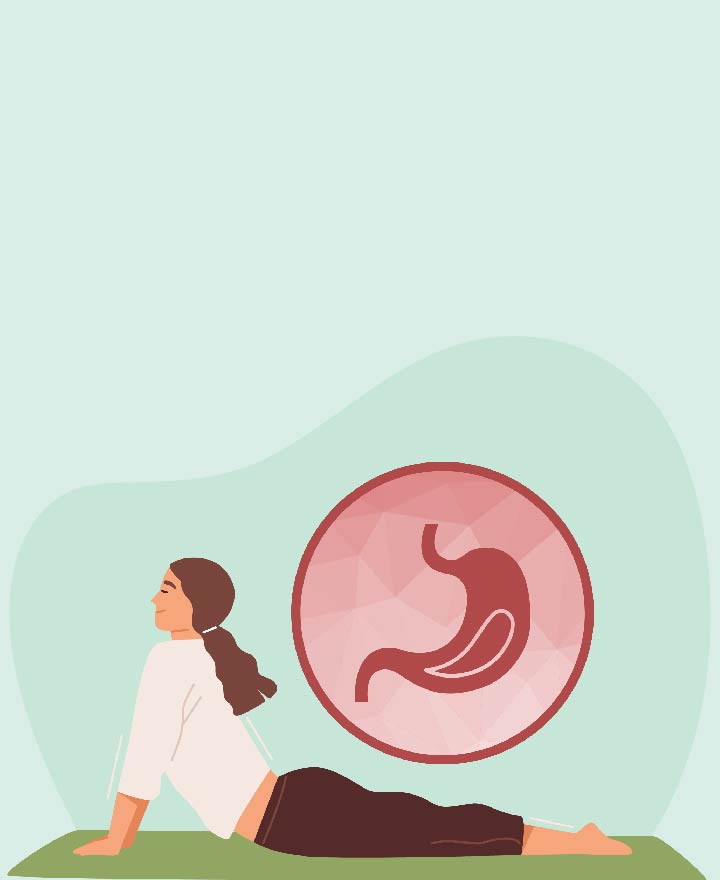

Shalabhasana - Locust Pose Benefits for Back Strength
Shalabhasana (Locust Pose) is one of the graceful yoga asanas today. The pose you hold in this asana resembles a flying locust or butterfly. It requires a lot of concentration, as your chest, head, and legs are off the ground at the same time. If you are looking for some workouts for toning and strengthening your lower back, Shalabhasana is a good choice for you. Following the right techniques of this asana is important to get the most out of this pose. Read on to learn how to perform it correctly and the numerous health benefits it offers.
Steps to Follow
• Lie on your stomach on a yoga mat and ensure your forehead rests on the ground.
• Keep your arms extended along the sides of your body.
• Stay in a relaxed position before you start your breathing routines.
• While inhaling, gently lift your head, chest and legs off the ground at the same time. Don’t bend your body while doing this.
• Look forward during this simultaneous lift, and take care of the alignment between your neck and spine.
• Now, as you exhale, stretch your legs and lengthen your spine.
• Your arms should be straight and pressed against the mat. Keep your shoulders relaxed by pulling them away from your ears.
• Stay in this pose for about 20 seconds, while you continue to follow deep breathing cycles.
• After 20 seconds, bring back your head, chest and legs to the ground and exhale deeply.
You can try these steps when you start doing Shalabhasana for the first time. However, when you have mastered this pose, you can move on to perform variations in this pose. These variations include:
• Airplane Locust Pose
In this variation, you place your arms extended forward while lying on your stomach on the mat, instead of placing them at your sides.
• Hand-Clasped Locust Pose
In this variation, you extend your arms backwards and you clasp them together while proceeding with the other steps of the Locust pose.
Top Health Benefits of Shalabhasana
Shalabasana and other such asanas in yoga help you lead a heathier life. However, to safe guard yourself against any unfortunate illness or injury, ensure you have a health insurance plan. Shalabhasana benefits you in the following ways:
• Strengthens the lower back
This asana requires you to lift your legs with the help of your stomach. Thus, it is a good workout for strengthening and toning your lower back muscles.
• Reduces PMS pain
Shalabhasana works on the pelvis and abdomen and strengthens the muscles there. Hence, doing this asana regularly can help reduce your post-menstrual syndrome (PMS) related pain and cramps.
• Improves flexibility
One of the best benefits of this pose is the increased overall flexibility in the shoulder, neck, spine, hips and pelvic floor.
• Improves the overall functioning of the kidney and liver
Shalabhasana requires you to stretch and compress your abdominal muscles a lot. Eventually, this improves the blood circulation to the kidneys and liver, improving their overall functionality.
• Helps improve digestion
Practising Shalabhasana regularly, the right way, can improve the functioning of the abdomen and the organs inside, like the spleen and liver. This asana helps improve your gut health by improving your digestion.
• Improved balance and posture
Your core strength builds up well when you perform Shalabhasana regularly. This helps to eventually improve your balance, stability and overall posture.
• Improved blood circulation
Shalabhasana plays a big role in keeping your cells healthy as it helps improve the blood flow to important body parts like the spine, abdomen, and lower back.
• Improved mental health
This asana improves your mental focus and keeps you free from stress and anxiety. This is because this asana requires immense concentration.
You and your close ones can take advantage of these benefits through consistent practice of the Shalabhasana. As an added measure, ensure that you have health insurance for family members as well.
Shalabhasana Contraindications You Should Know About
Here are some tips you should keep in mind while doing Shalabhasana to avoid risks or injuries:
• Refrain from Shalabhasana if
◦ You are pregnant
◦ You are diagnosed with severe sciatica (a pain in the sciatic nerve)
◦ You recently got injured in your back, shoulder or neck
◦ You are diagnosed with cardiac issues, hip arthritis, glaucoma or a hernia
• If you experience pain or discomfort in your spine or lower back, consult your doctor before doing Shalabhasana.
• This asana cannot be used to treat hormonal imbalances leading to menstruation problems, issues with the uterus, etc.
Conclusion
Shalabhasana is a great daily routine you can follow to strengthen and tone your lower back, spine, shoulders and neck. While this asana can help you by reducing the symptoms of certain conditions like menstrual problems, prolapsed uterus and more, it cannot treat the condition, per se. Seeking medical help for these conditions and others is the only permanent solution.
Medical treatments and procedures can be expensive. However, with the right health insurance plan, you can avoid out-of-pocket costs for many of these expenses. A comprehensive policy typically covers treatments, diagnostic tests, hospitalisation, medications, rehabilitation, and more
One of the important components of our overall wellness is also being financially secured. Healthcare emergencies can happen any time, but a good health insurance policy can protect you from such uncertain situations. To know more about Wellness and other health related tips, visit the wellness corner.
Sources: tataaig.com, bajajfinserv.in, healthshots.com
Disclaimer: This blog provides general information and discussions about health and related subjects. The information and other content provided in this blog, website or any linked materials are not intended and should not be considered or used as a substitute for medical advice, diagnosis or treatment. Kindly contact your doctor before starting a new medicine or health regime.
Related Articles
How To Incorporate Yoga Into Your Daily Routine
How to Do Super Brain Power Yoga in 6 Simple Steps
What Is Yoga : Everything You Need to Know About it
Benefits Of Daily Yoga Practice To Enhance Your Health
Does Yoga Help in Burning Calories and Losing Weight?
Published on July 16, 2025















 Health Insurance
Health Insurance  Travel Insurance
Travel Insurance  Car Insurance
Car Insurance  Cyber Insurance
Cyber Insurance  Critical Illness Insurance
Critical Illness Insurance
 Pet Insurance
Pet Insurance
 Bike/Two Wheeler Insurance
Bike/Two Wheeler Insurance  Home Insurance
Home Insurance  Third Party Vehicle Ins.
Third Party Vehicle Ins.  Tractor Insurance
Tractor Insurance  Goods Carrying Vehicle Ins.
Goods Carrying Vehicle Ins.  Passenger Carrying Vehicle Ins.
Passenger Carrying Vehicle Ins.  Compulsory Personal Accident Insurance
Compulsory Personal Accident Insurance  Travel Insurance
Travel Insurance  Rural
Rural